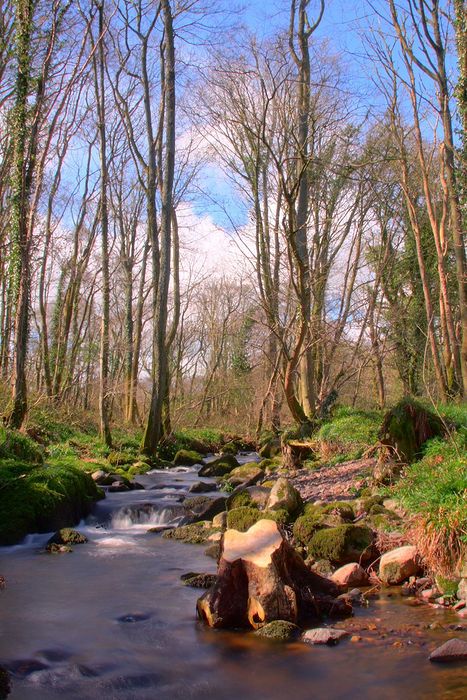Qtpfsgui Ashikhmin Notes
Test Image: Test1.hdr (Hass Burn images 357, 359, 361, April 2009 copyright DARW)
Initial Set-Up: As per Qtpfsgui Drago Notes.
Ashikhmin Tone Mapping Operator
The user is presented with three button options and one slider option. The button options are:
Simple – unchecked at default;
Eqn2 – checked at default; and
Eqn 4 – unchecked at default.
The slider is Local Contrast Threshold with default 0.50 and range 0.00 to 1.00.
Using the default options (Eqn2) gives a recognisable, but very dark image. Using the Adjust Levels tool allows the luminance of the image to be increased, but the result appears slightly unfocused and dark tones are undifferentiated. Returning to the defaults, but lowering the pre-gamma to 0.5 gives an even darker image; raising pre-gamma to about 2.000 and using Adjust Levels gives a reasonable working image. The colour saturation is good and tonal values even in dark areas are well covered.
Back to default values for all parameters, but now decreasing the Local Contrast Threshold slider to 0.00 gives a slightly washed out but usable image, regrettably lacking in dark tone detail. The Adjust Levels tool reveals, however, a well spread histogram and fine tuning this with the Levels controls gives a slightly over-saturated but pleasant image. Raising Local Contrast Threshold to 1.00 darkens the images unacceptably.
Repeating the above sequence of investigations with Eqn 4 as choice gives, effectively the same spectrum of results.
Activating the Simple button, deactivates the Local Contrast Threshold slider and the two Eqn options. The immediate result is very similar to the best results from the other options with the histogram, apparently, identical.
Conclusions:
Using the Simple option or either of the two Eqn options with Local Contrast Threshold set to low or zero values give pleasant realistic images, slightly over-saturated. Given the relative simplicity of control options, this TMO is worth using for realistic images. Whether the extreme tonal araes, both dark and light, benefit from this TMO needs further investigation. Computational time on my system is of the order of a seconds for a 1024x1536 image.
Technical Notes:
The author of this TMO is M Ashikhmin, “A Tone Mapping Algorithm for High Contrast Images”,
in the 13th Eurographics Workshop on Rendering, 2002. The abstract of the paper states:
“A new method is presented that takes as an input a high dynamic range image and maps it into a limited range of luminance values reproducible by a display device. There is significant evidence that a similar operation is performed by early stages of human visual system (HVS). Our approach follows functionality of HVS without attempting to construct its sophisticated model. The operation is performed in three steps. First, we estimate local adaptation luminance at each point in the image. Then, a simple function is applied to these values to compress them into the required display range. Since important image details can be lost during this process, we then re-introduce details in the final pass over the image. “
I have not been able to glean very much from perusal of the original paper. However, the Eqn options, Eqn 2 and Eqn 4, appear to be methods of re-introducing detail into the image. The actual tone mapping procedure, to fit the HDR data to LDR displays, appears to be a power function (like logarithms) that has been developed by the author to try to mimic aspects of the human visual system.
Sources: As per other notes in this series.
 Helpful Posts: 0
Helpful Posts: 0
Results 1 to 1 of 1
-
1st June 2009, 02:53 PM #1
Qtpfsgui Notes - The Ashikhmin TMO



 Reply With Quote
Reply With Quote
